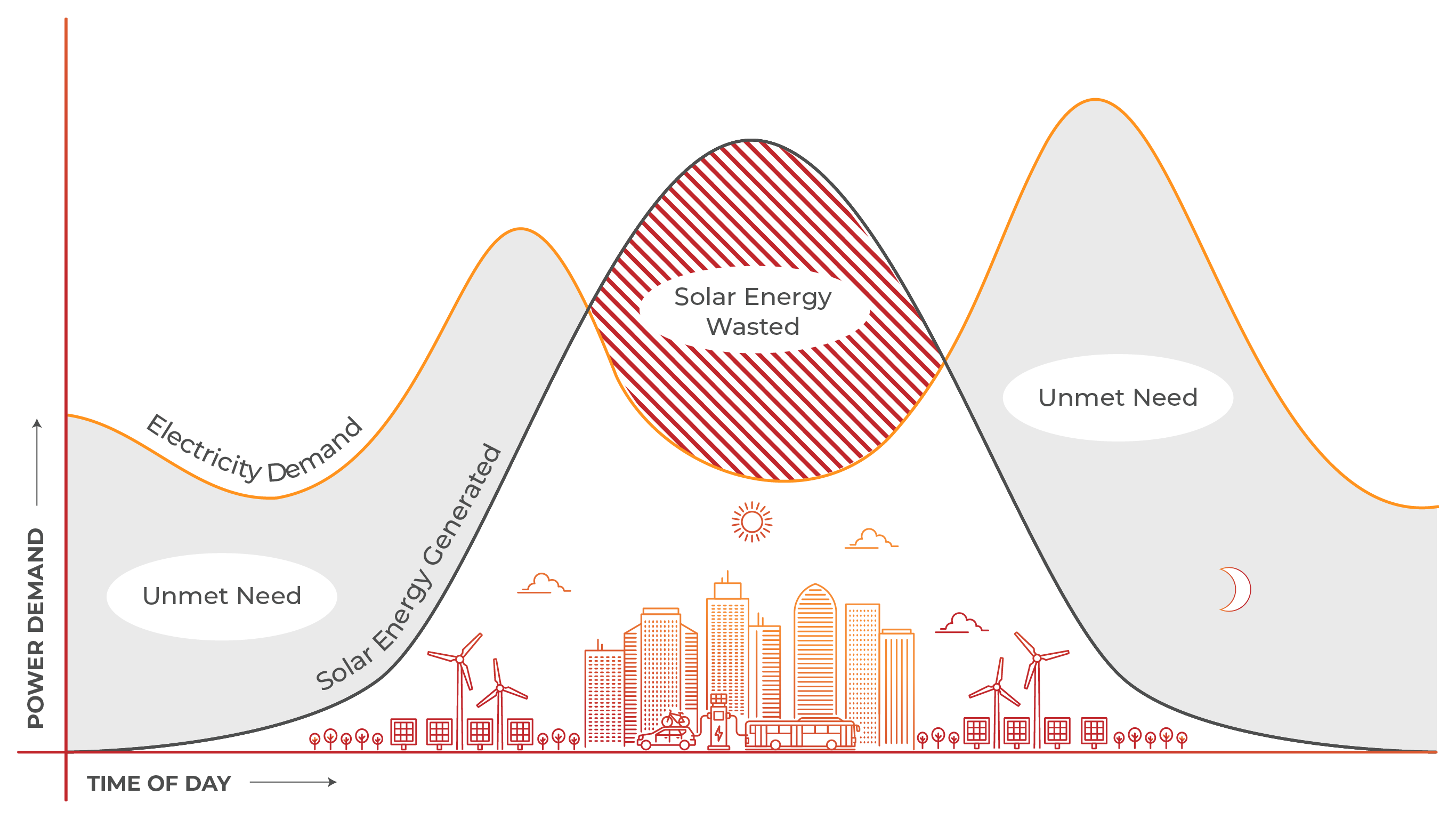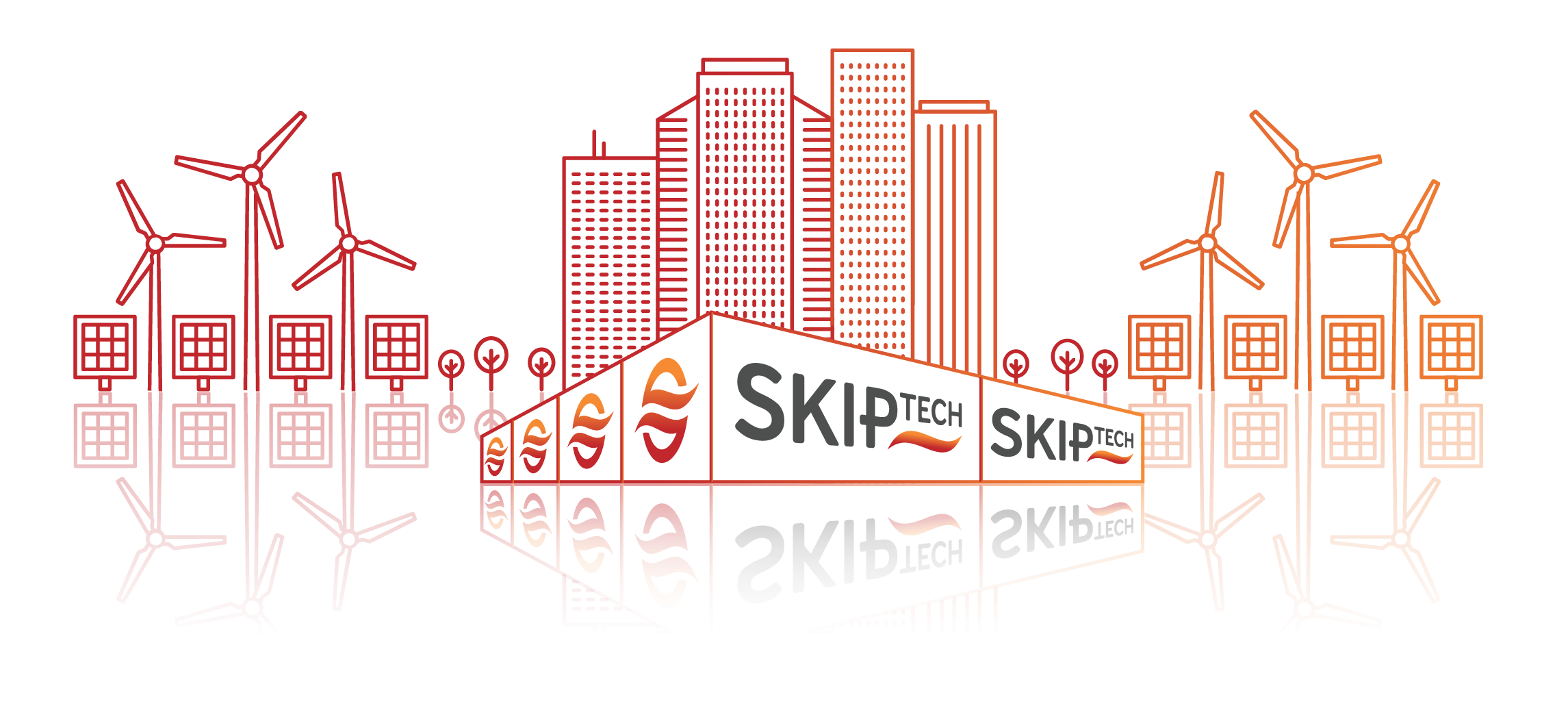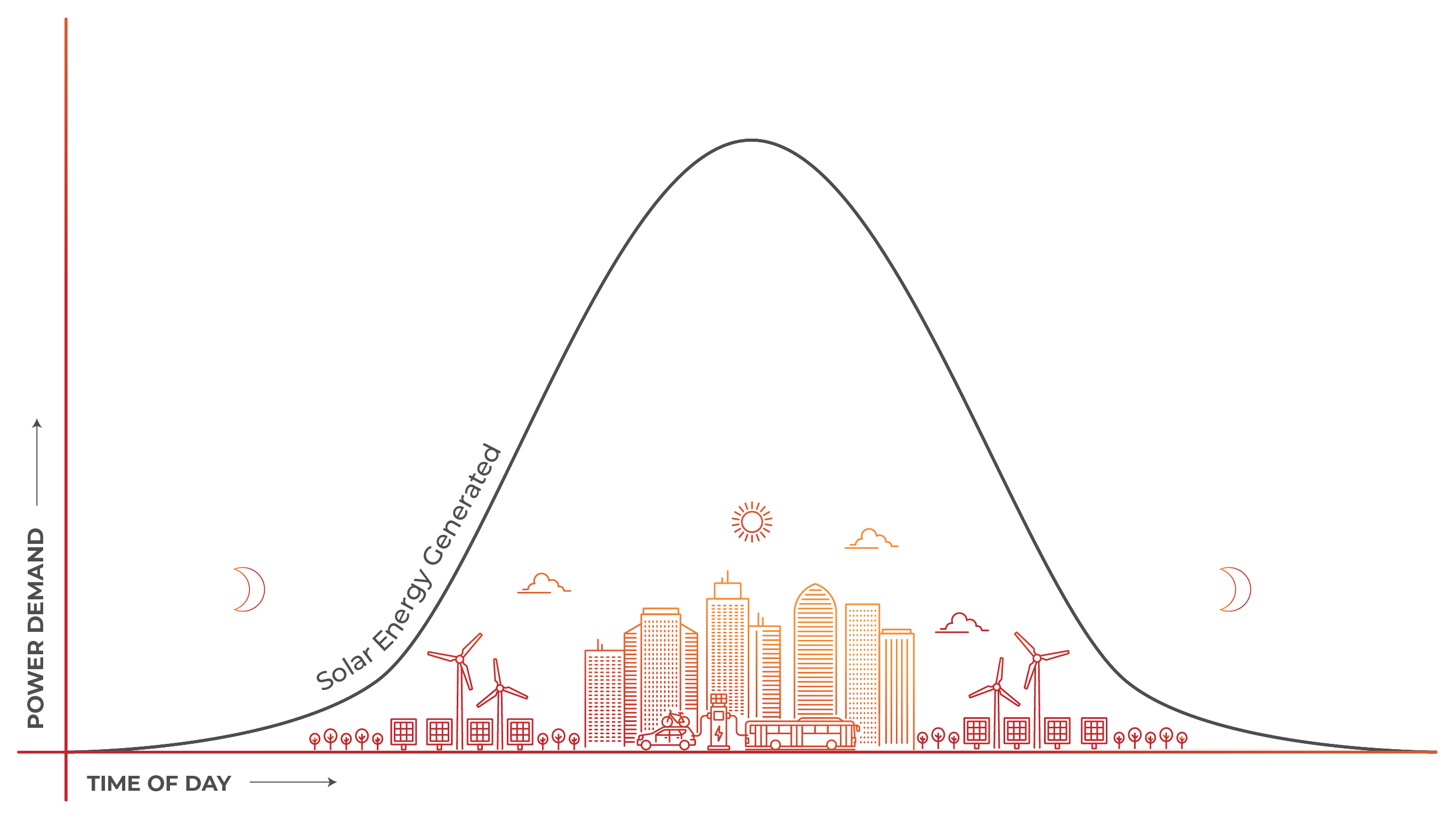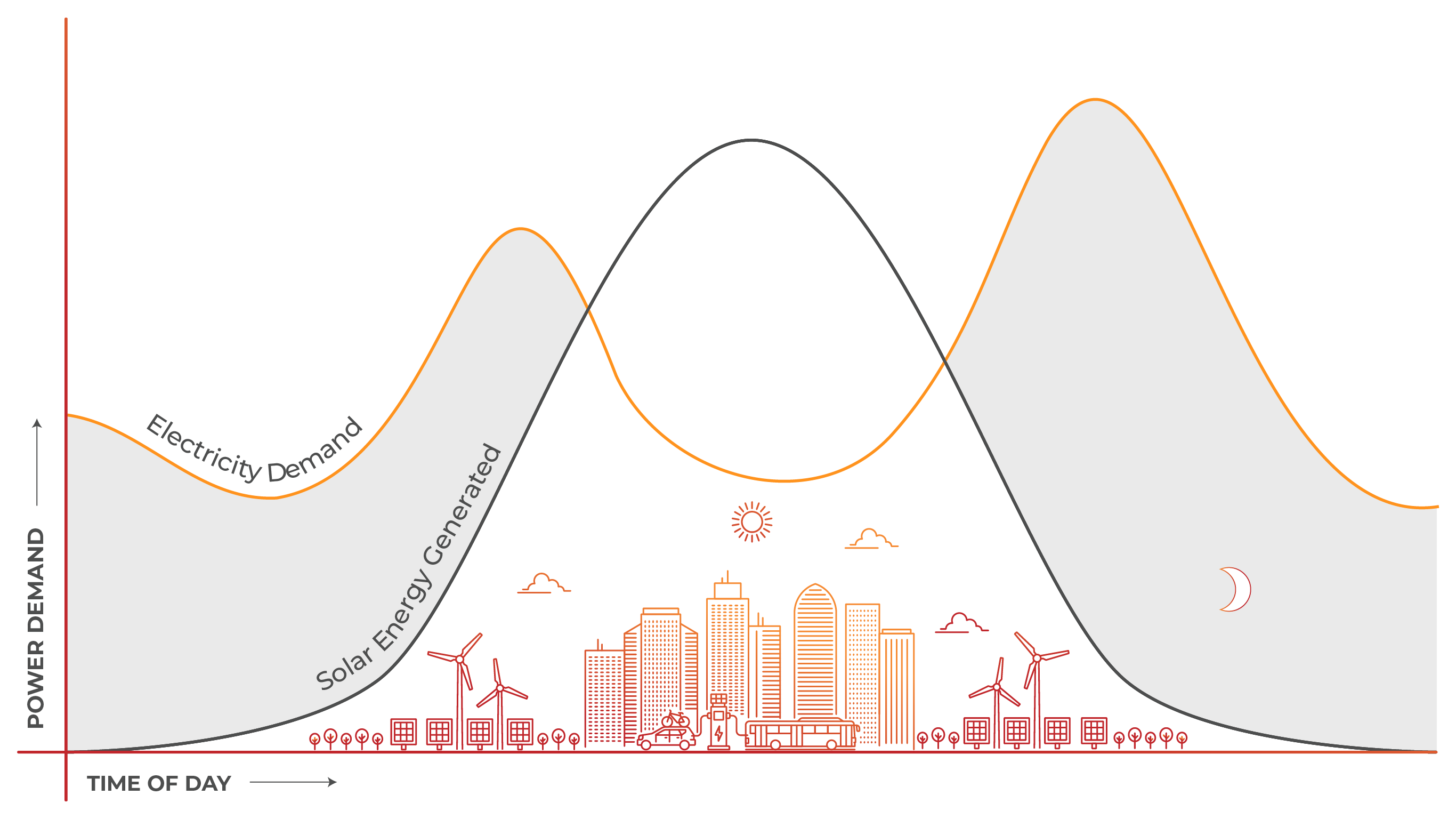Most sources of renewable power are much more variable than traditional power sources in time: solar power peaks at mid-day and declines in mornings and evenings; wind power comes and goes in gusts. While the cost of producing renewable energy is falling, matching generation with usage is still a barrier.
With solar power in particular, this imbalance creates the well-known “duck curve”, where the net load on the utility grid plummets at mid-day, before sharply rising in the early evening. On-site energy storage enables time-shifting of power to match variable supply with variable demand.
Excess energy captured during the day, from solar, can be used to meet increased demand in the evening. Pairing energy storage with renewable sources enables users to decouple from the grid, either for economic, philosophical, or resilience reasons.
XMC GATE IO DISABLE

In 2022 the California Independent System Operator (CAISO) curtailed 2.4 million megawatt hours (MWh) of utility-scale wind and solar output, a 63% increase from 2021 (U.S. Energy Information Administration, 2023).
At wholesale costs that’s millions of dollars of economic loss. The storage and timed release of electricity through large-scale batteries like the Skip Tech system can help cure the curtailment problem and eliminate wasted clean energy.





